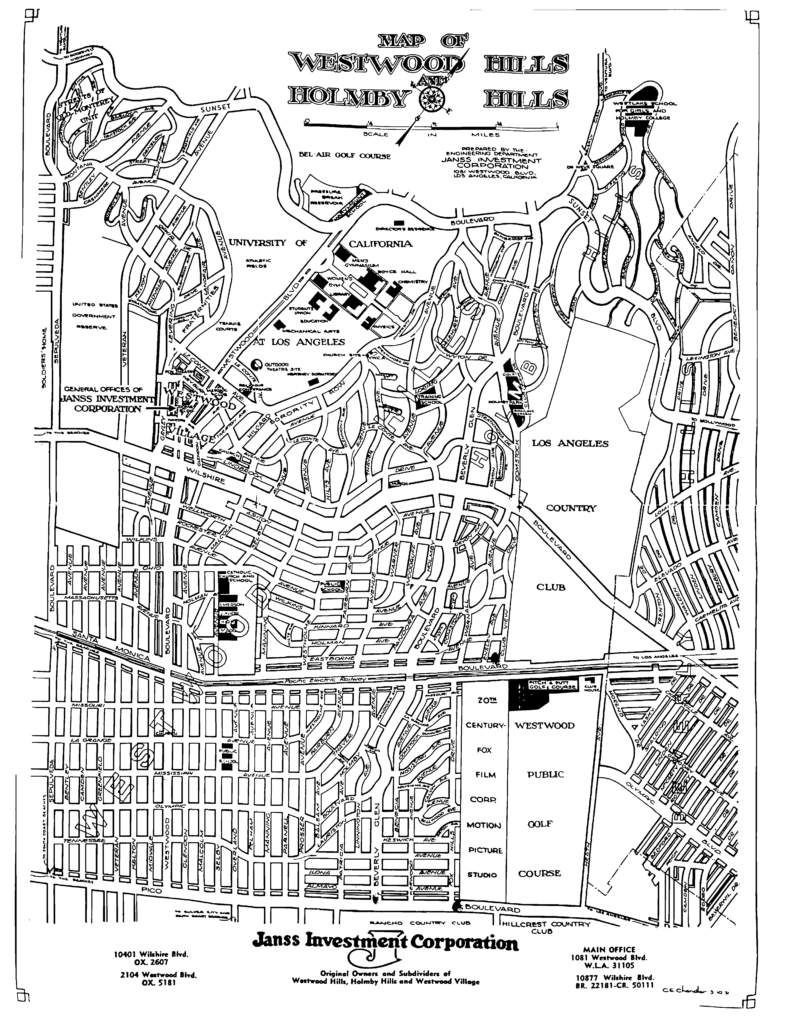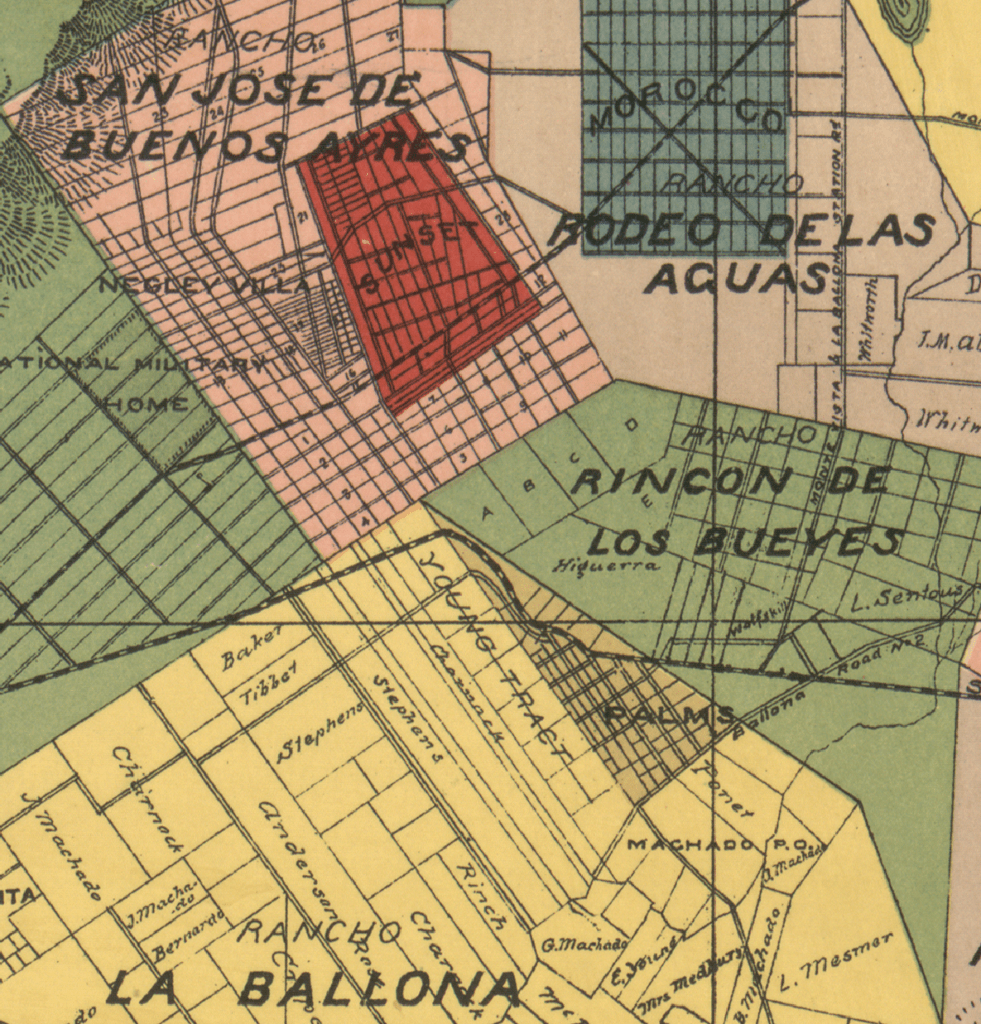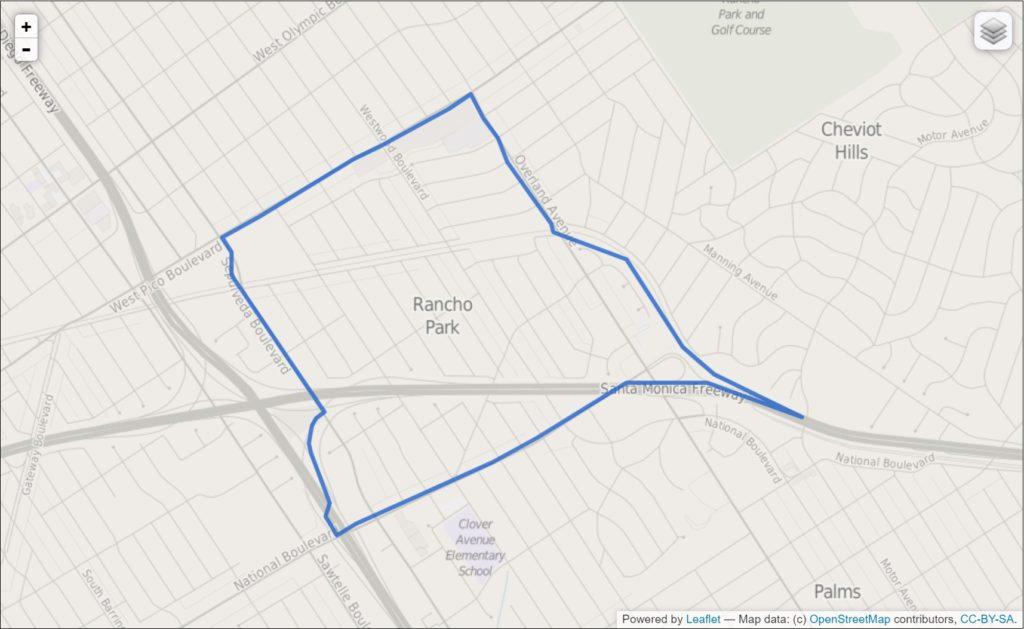Shortly before World War II, stakeholders began using the name “Rancho Park” for the Pico Boulevard business district and adjacent residential subdivisions, including parts of Westwood Hills (1923) and Country Club Highlands (1923) and all of Westwood Gardens (1944).
In his 1967 newspaper article, Ralph Brogden (a former head of the Rancho Park Chamber of Commerce), outlined Rancho Park’s initial boundaries and explained the desire to create an identity apart from Westwood:
The northern environs of the community of Rancho Park now encompass the southern portion of the original Westwood tract (from Olympic Blvd. to Pico). Rancho Park also envelopes [sic] the region south of Pico to National Blvd. from Cheviot Hills on the east to Sepulveda Blvd. on the west.
Ralph Brogdon, History of the Golden Westside, Book One, The Rancho Park Story, Chapter One (Citizen-News, Aug. 31, 1967).
We thought it was about time to have our own community. We must separate ourselves from Westwood. There were many names suggested for our new community but there was a pioneer real estate broker here who had established his office on Pico near Manning back in 1927. His name was Bill Heyler. Bill did as much as any other one person to develop the area; so when it came to adopting a name for the community, the wisdom of our pioneer was in counsel. The honor of naming this community “Rancho Park” went to Bill Heyler.

Rancho Park might be named for the three Nineteenth Century ranchos which intersected at Pico Boulevard and Overland Avenue: Rincon de Los Bueyes, La Ballona, and San Jose de Buenos Ayres. The nearby public golf course, today’s Rancho Park Golf Course at Cheviot Hills Recreation Center, was founded in 1921 by the “Rancho Golf Club,” possibly named for the ranchos.

The Rancho Park name (whether first applied to the Rancho Golf Club or Rancho Park) could also be based on Ferdinand Bain’s Rancho La Lomita, which operated at the heart of the district from 1919 until 1939 – about the time realtor William F. Heyler, Jr. (1894-1959) and his cohorts chose the name. Bill Heyler could have named Rancho Park based on any or all of these factors, or simply from the romantic ideal of rancho life.

The above map from Los Angeles Times’ “Mapping L.A.” Project shrinks Rancho Park’s to Pico Boulevard and removes all of Country Club Highlands, while expanding it in the southeast to include the Ponty Tract and in the southwest beyond Sepulveda Boulevard. The City’s signs marking the neighborhood (shown at the top of this page) continue to be posted as far north as Olympic Boulevard.